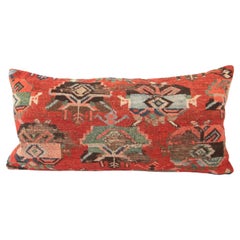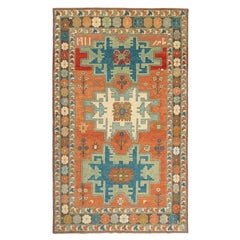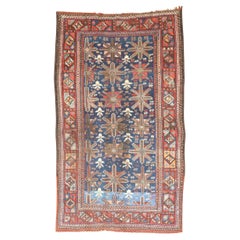Hand-Woven Caucasian Rugs
Early 20th Century Caucasian Tribal Hand-Woven Caucasian Rugs
Wool
21st Century and Contemporary Turkish Revival Hand-Woven Caucasian Rugs
Wool, Natural Fiber, Organic Material
Early 20th Century Persian Tribal Hand-Woven Caucasian Rugs
Wool
Early 20th Century Caucasian Kilim Hand-Woven Caucasian Rugs
Wool, Natural Fiber, Organic Material
Early 20th Century Caucasian Kilim Hand-Woven Caucasian Rugs
Wool, Natural Fiber
Early 20th Century Caucasian Tribal Hand-Woven Caucasian Rugs
Wool
Early 20th Century Caucasian Kilim Hand-Woven Caucasian Rugs
Wool, Natural Fiber, Organic Material
Early 20th Century Caucasian Kilim Hand-Woven Caucasian Rugs
Wool, Natural Fiber, Organic Material
Late 19th Century Caucasian Tribal Antique Hand-Woven Caucasian Rugs
Wool
21st Century and Contemporary Turkish Revival Hand-Woven Caucasian Rugs
Wool, Natural Fiber, Organic Material
Mid-20th Century Caucasian Kilim Hand-Woven Caucasian Rugs
Wool, Natural Fiber, Cotton
21st Century and Contemporary Turkish Revival Hand-Woven Caucasian Rugs
Wool, Natural Fiber, Organic Material
Late 19th Century Caucasian Antique Hand-Woven Caucasian Rugs
Wool, Cotton
21st Century and Contemporary Turkish Revival Hand-Woven Caucasian Rugs
Wool, Natural Fiber, Organic Material
19th Century Romanian Antique Hand-Woven Caucasian Rugs
Wool
21st Century and Contemporary Turkish Revival Hand-Woven Caucasian Rugs
Organic Material, Natural Fiber, Wool
21st Century and Contemporary Turkish Revival Hand-Woven Caucasian Rugs
Wool, Natural Fiber, Organic Material
Early 20th Century Caucasian Kilim Hand-Woven Caucasian Rugs
Wool, Natural Fiber, Organic Material
Mid-19th Century Caucasian Antique Hand-Woven Caucasian Rugs
Wool
Early 20th Century Persian Tribal Hand-Woven Caucasian Rugs
Wool
Early 20th Century Caucasian Agra Hand-Woven Caucasian Rugs
Wool
21st Century and Contemporary Turkish Revival Hand-Woven Caucasian Rugs
Wool, Natural Fiber, Organic Material
21st Century and Contemporary Turkish Revival Hand-Woven Caucasian Rugs
Wool, Natural Fiber, Organic Material
Late 20th Century Caucasian Kilim Hand-Woven Caucasian Rugs
Natural Fiber, Wool
Late 19th Century Caucasian Kazak Antique Hand-Woven Caucasian Rugs
Wool
Early 20th Century Persian Tribal Hand-Woven Caucasian Rugs
Wool
21st Century and Contemporary Turkish Revival Hand-Woven Caucasian Rugs
Wool, Natural Fiber, Organic Material
Early 20th Century Russian Tribal Hand-Woven Caucasian Rugs
Wool
Early 20th Century Persian Malayer Hand-Woven Caucasian Rugs
Wool
Early 20th Century Persian Tribal Hand-Woven Caucasian Rugs
Wool
Late 19th Century Azerbaijani Kazak Antique Hand-Woven Caucasian Rugs
Wool, Cotton
Late 19th Century Tribal Antique Hand-Woven Caucasian Rugs
Wool
Late 19th Century Caucasian Antique Hand-Woven Caucasian Rugs
Wool
Late 19th Century Caucasian Kazak Antique Hand-Woven Caucasian Rugs
Wool
Early 20th Century Caucasian Kazak Hand-Woven Caucasian Rugs
Wool
Late 19th Century Caucasian Kazak Antique Hand-Woven Caucasian Rugs
Wool
Early 20th Century Caucasian Tribal Hand-Woven Caucasian Rugs
Wool
1880s Caucasian Sumak Antique Hand-Woven Caucasian Rugs
Wool
21st Century and Contemporary Turkish Revival Hand-Woven Caucasian Rugs
Wool, Natural Fiber, Organic Material
1880s Armenian Antique Hand-Woven Caucasian Rugs
Cotton, Wool
21st Century and Contemporary Turkish Revival Hand-Woven Caucasian Rugs
Wool, Natural Fiber, Organic Material
Late 19th Century Turkish Kilim Antique Hand-Woven Caucasian Rugs
Wool
Early 20th Century Caucasian Hand-Woven Caucasian Rugs
Wool, Cotton, Natural Fiber
1920s Azerbaijani Tribal Vintage Hand-Woven Caucasian Rugs
Wool
19th Century Caucasian Antique Hand-Woven Caucasian Rugs
Wool
Late 19th Century Caucasian Kazak Antique Hand-Woven Caucasian Rugs
Wool
Late 19th Century Azerbaijani Sumak Antique Hand-Woven Caucasian Rugs
Wool
Early 20th Century Caucasian Tribal Hand-Woven Caucasian Rugs
Wool
19th Century Caucasian Kilim Antique Hand-Woven Caucasian Rugs
Wool
Late 19th Century Caucasian Antique Hand-Woven Caucasian Rugs
Wool
Late 20th Century Kazakhstani Tribal Hand-Woven Caucasian Rugs
Wool, Cotton, Organic Material
19th Century Caucasian Antique Hand-Woven Caucasian Rugs
Wool
1890s Caucasian Antique Hand-Woven Caucasian Rugs
Wool
19th Century Caucasian Antique Hand-Woven Caucasian Rugs
Wool
Early 20th Century Azerbaijani Rustic Hand-Woven Caucasian Rugs
Wool, Cotton, Organic Material
Early 20th Century Tribal Hand-Woven Caucasian Rugs
Wool
Early 20th Century Caucasian Kazak Hand-Woven Caucasian Rugs
Wool
Late 19th Century Caucasian Antique Hand-Woven Caucasian Rugs
Wool, Cotton
Late 19th Century Caucasian Kazak Antique Hand-Woven Caucasian Rugs
Wool
Early 20th Century Persian Kazak Hand-Woven Caucasian Rugs
Wool





